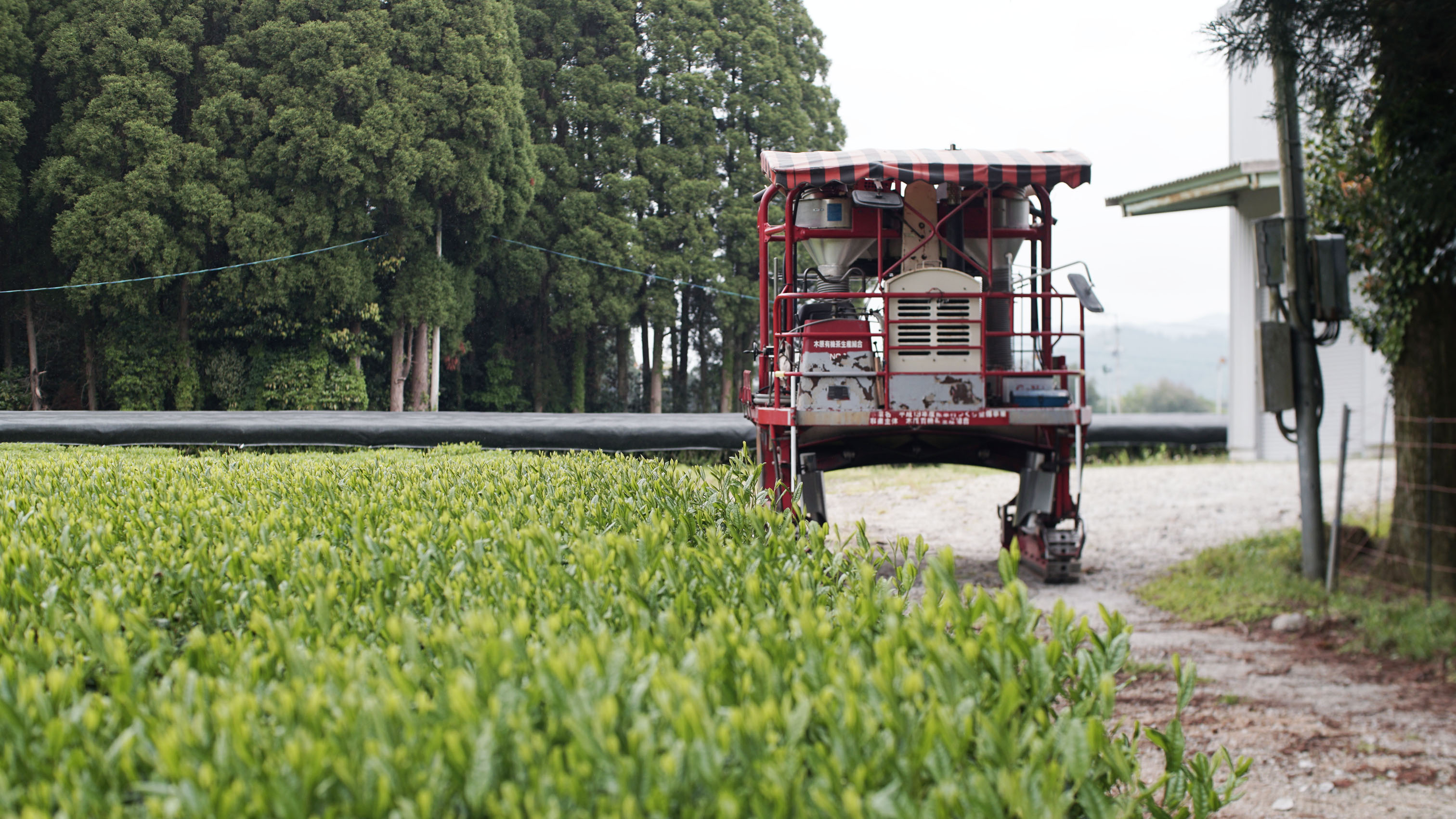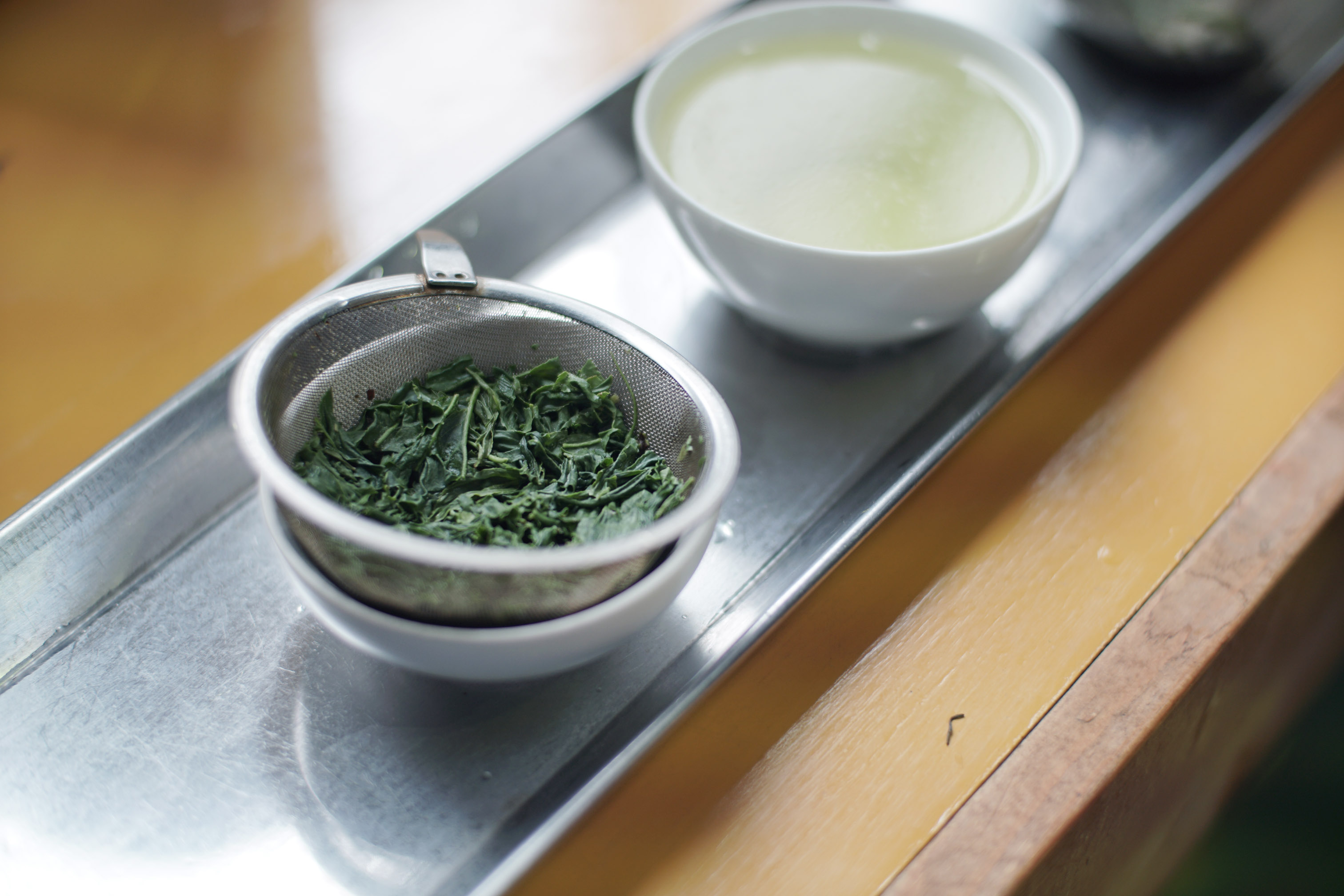Today, we are at Shutaro Hayashi’s in Kirishima, already the third time in 2017. This year, we are able to follow the whole process from shading to harvest and processing of the new Kirishima Aracha Shincha 2017. Last week, Shutaro Hayashi had more time to spend on us, so that we could wander through the rows of tea together. Today, his father Osamu looks after us, because Shutaro Hayashi turns his attention on the processing of the Shincha.
During our first visit this year on 24th April, Shutaro and Kenji had just finished shading the Asatsuyu cultivar’s tea garden parcel for the Kirishima Tennen Gyokuro. The small Mishou Asatsuyu cultivar’s parcel for the Kirishima Aracha Shincha, which lies a little bit isolated, we could look at still without the black nets on this day. On 25th April this parcel too was shaded. Now, eight days later, it is time: The KIRISHIMA ARACHA SHINCHA is being harvested.

In the morning, we first meet Shutaro’s sister Momoko. Together, we drive to her family’s organic tea garden, which is located at an altitude of roughly 260 meters over sea level. As we arrive at the tea garden, Shutaro and Kenji have been processing the freshly harvested leaves for quite a while. Kenji Hayashi shows us his documentation of the day’s tasks: At 6 a.m. the harvest starts, Kenjis work, at 7.30 a.m. the first leaves arrive at the processing hall. From 8 a.m. on, the fresh tea leaves are being steamed, loosened up, dried and formed into needles. Doing this, Shutaro Hayashi shows all his knowledge and skill. Untill the processing can start, a certain amount of time for heating up the boiler is necessary, so that the water vapor for steaming can be created.

Shutaro already shows us the first result of his work. The colour of the leaves is great and the flavour of this pre-processed tea (Aracha) is overwhelming. By the way, what is the difference between an Aracha and a finally processed tea? There are some processing steps later on, which have not happend in the stadium of an Aracha. At this stadium, the tea is not yet sorted. Only a sieve separates large leaves and stipes from the smaller ones. Looking at this year’s KIRISHIMA ARACHA SHINCHA we recognize, that Shutaro harvested very early this year, so he could get an extraordinarily good quality. We can see in this Aracha sample he gave us for tasting, nearly no stipes at all. In addition to the early point of harvest, this can be explained through the nobel tea bush varietal Asatsuyu, which has short internoids and therfore a very small part of Kuki.

The water content of the Aracha is with 5% remaining humidity slightly higher as of a customary Sencha, which has a remaining humidity of 2%. Concerning flavour, the world of the Aracha is still closer to a fresh tea leave. The glowing green Aracha certainly shows the flavour characteristics of the tea bush varietal Asatsuyu clearly more than the finally processed tea from the same tea bush sort. Because of the final heating (hi-ire), the characteristics of the tea bush variety step back.

Last but not least, we find the time to poure and enjoy the KIRISHIMA ARACHA SHINCHA – Kabuse Asatsuyu cultivar in a real kyusu ( a unique piece of NARIEDA Shinichiro, which differs slightly in form from the tea pots of a smal series from the year 2016). While during the „tasting infusion“ the Aracha Shincha is infused with hot water, so that you can taste all the different nuances, now we infuse it in such a way, that it can be enjoyed perfectly: Many leaves, a relatively low temparature and in a kyusu, which gives it much wealth. It shows too, that this tea – even if it is a Aracha – has lots of umami and tastes round. We take a gasp of relief, because everything did go so well.